Beside the dance and movement making of the Residuals #1 performance, it created a large charcoal drawing about 3 metres by 1.5 metres in size. There were also numerous photographs made by my co-creator John Hazel and me of its surface during and after the performance.
The end?
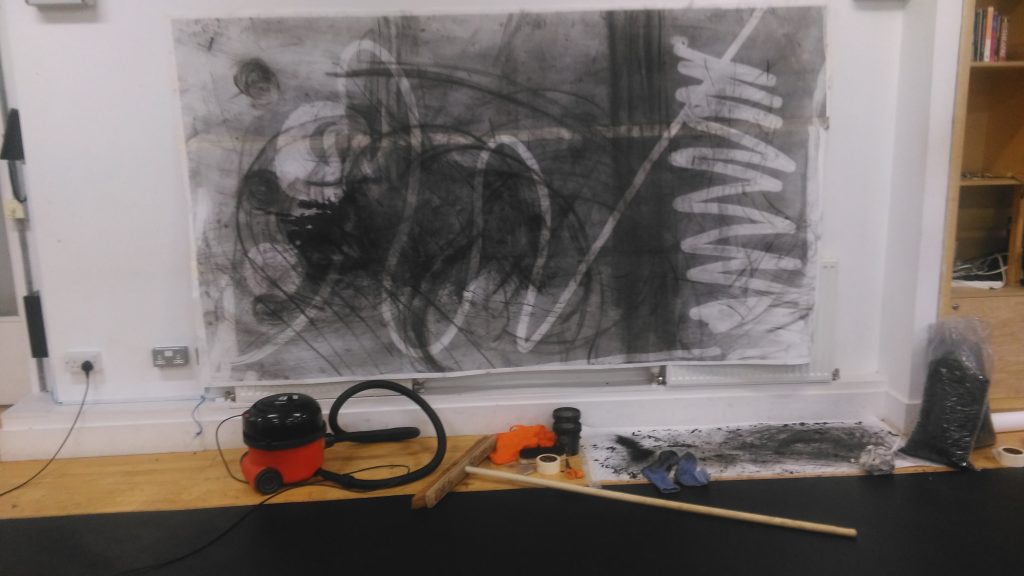
Knowing when to finish a drawing or a painting is difficult. There is the temptation to overwork it or underwork it. The latter are sometimes called ‘sketches’ as if not finished works.
Perhaps there were two endings in this work: one when John left to catch the bus home, and the other when the paper surface on which we’d worked, was hung on the wall? We’d made many photographs of the drawing’s surface and perhaps each of those might be considered finished works? But like landscape photography, the landscape endures and continues beyond its observation and recording in a photograph or otherwise. We might also say that the work is finished in a somatic sense, from a feeling we have in our body or a change from a movement practice.
All about surface
This is a small selection of the photos – these are from a digital camera ‘smartphone’. The framing by the camera is enough to create a new artwork. There are also a set of photos from a 35mm black and white film which have better contrast, and show the gritty texture of charcoal residuals in more detail (see below).



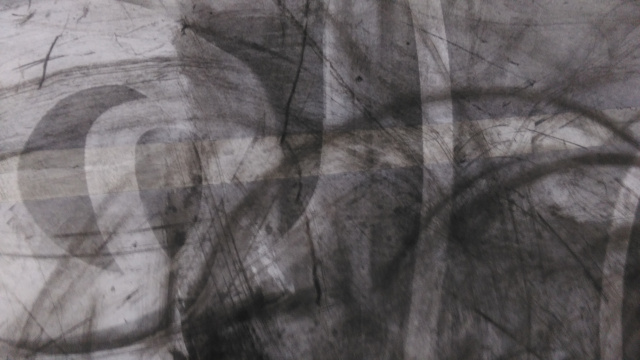

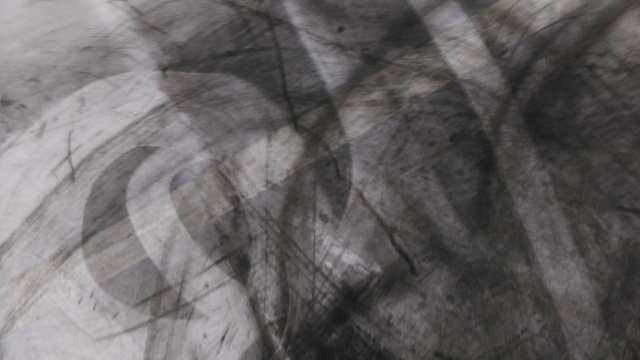
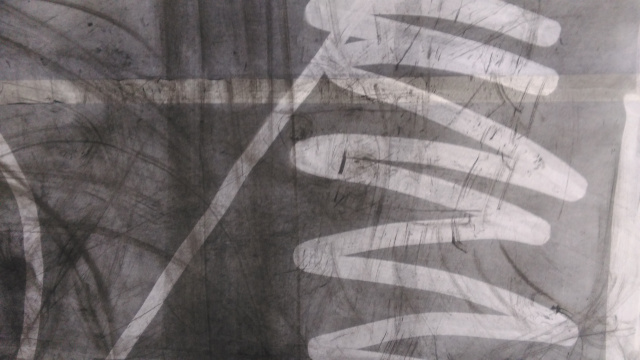
Colour
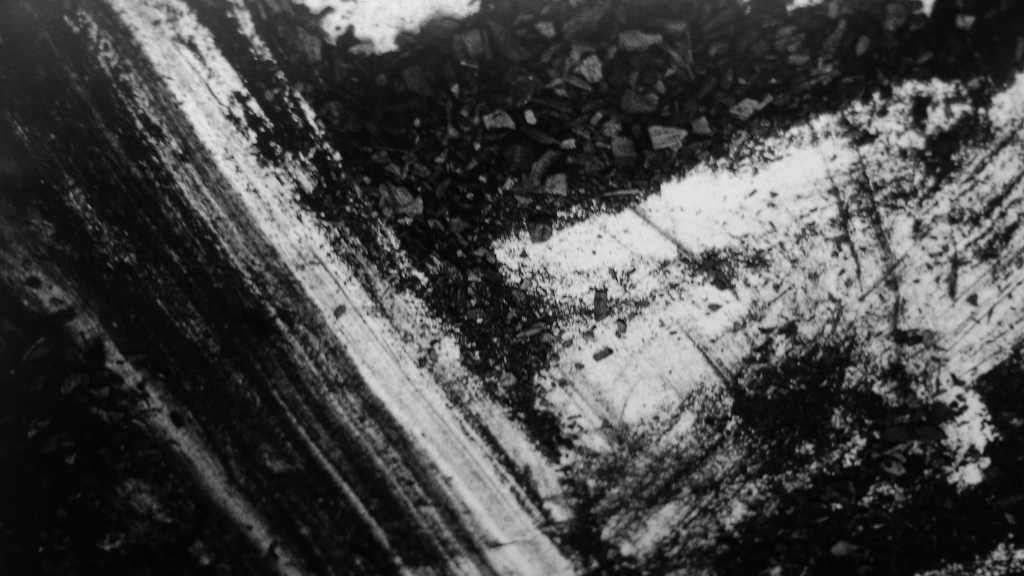
I showed some photos of the work at the Beckley Art Group in January. One artist at the meeting commented how Japanese were the images due to the strong presence of black and white. Of course, this is a great compliment to me as one of the influences in this project is the Japanese artist Kazuo Shiraga
The black and white images have a drama about them. But I wonder if colour could be brought into it by the use of tints?
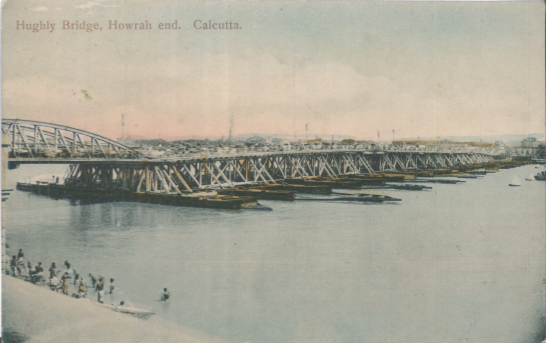
In my collection of images I have a postcard of a bridge in Calcutta, India. It’s a black and white print but colour – mostly pink for the sky and blue for the river, have been applied as a watercolour tint onto it.
Perhaps this is a way of introducing colour? The advantage of not using colour in the performance is that it concentrates the artistic practice on mark-making. The addition of colour as a secondary process would allow colour inclusion. Remember how John Hazel and I added colour into our mark-making investigation by using water, and the blue of the sky being reflected in it. Clearly, colour can be present without detracting from the aesthetics of a restricted palette. It might enhance it.
What next?
I have been talking with a local printer about enlarging the black and white photos – especially those shot on 35mm film – and printing the onto paper. This could be tinted with watercolour.
I hope to create further performances and art works. A duet, the incorporation of ritual into the performance or different techniques. Mostly though, finding artistic collaborators and working our ideas and practice together is top of my plans. A co-created space (‘shared canvas’) and practice is central to this work.
Featured image
Detail from surface of the Residuals performance #1. Artists John Hazel and Andrew Wood. Photo: Andrew Wood. Tuesday 15 December, Old Fire Station dance studio, Oxford, UK.